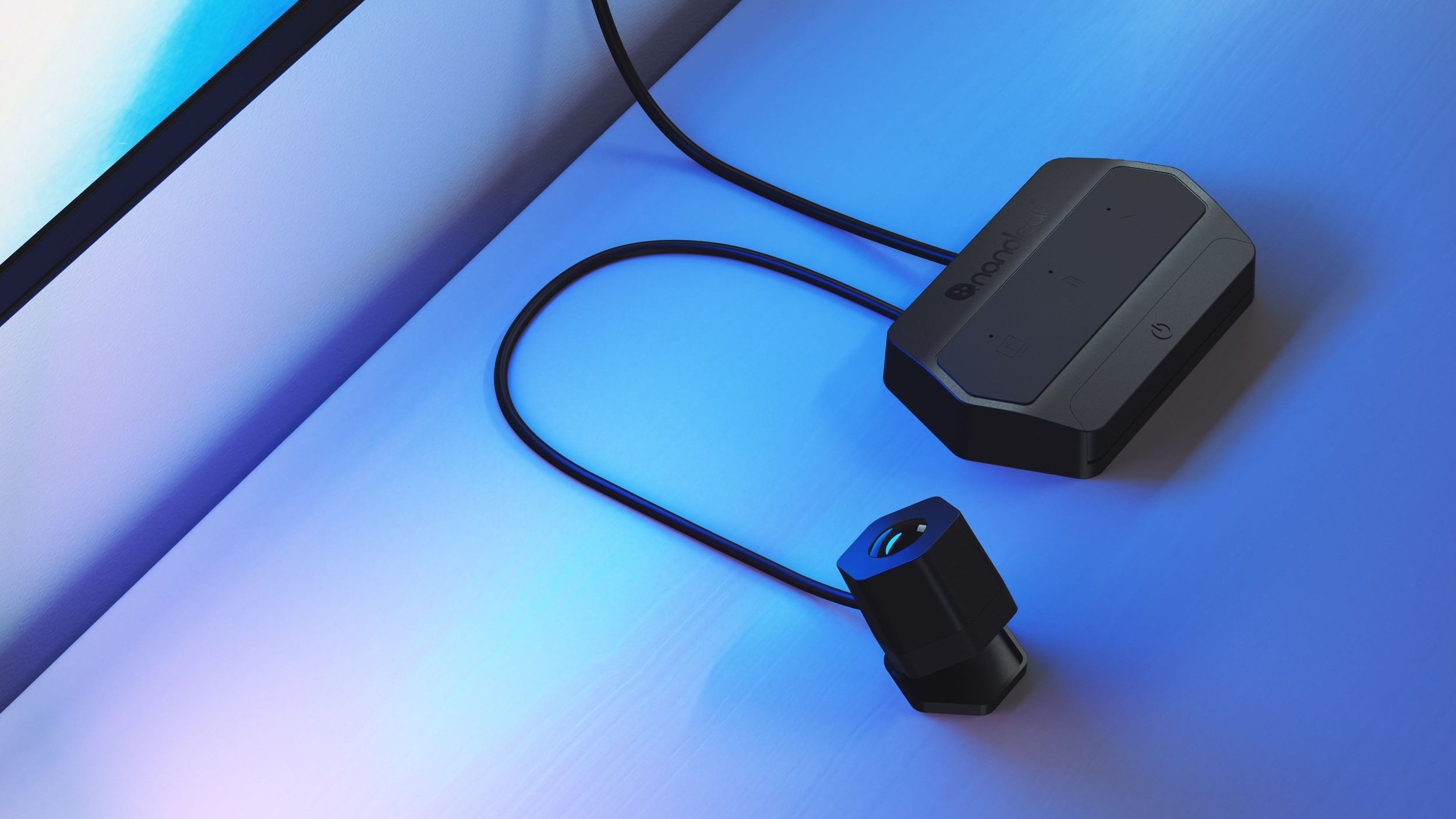Nanoleaf 4D
A product that creates a fully immersive experience, Nanoleaf 4D brings the visuals beyond the borders of a screen. Using a Camera that can sit above or below the TV, this product system can adapt to almost any entertainment setup and work seamlessly with other Nanoleaf products to truly immerse users.
Collaborating closely with the UX team, Embedded team, Engineering team, and Marketing team, this project was brought from concept to mass production, making it’s debut at CES 2023 to positive critical and crowd reception.
The Product System
Leading the design efforts, I conducted thorough market research to decide which approach was the best to achieve the “wants” of the marketing team in this product. After analysis, I concluded that Nanoleaf 4D would consist of 5 physical components; the camera, the controller, the TV mount, the corner brackets, and the light strip.
Camera - Development
I identified the camera to be the most important component to the system as it will be the first point of interest users and their guests will see. The goal was to create a modular camera that could be independently placed anywhere below a TV, while still being able to attach to the top edge of TVs with a mount. It was critical to achieve the 2 use cases as this would ensure the product can work with any entertainment system configuration.
Camera - Final Design
The final design of the camera can be hinged at the base, allowing users to aim it towards the TV at any angle. A privacy cover magnetically snaps into place on top of the camera to avoid accidental shifting of the unit. When the cover is not in use, it can be attached to the base or side of the camera without affecting it’s performance.
Controller - Development
After a user installs Nanoleaf 4D, the main point of interaction for the product will be the controller. It needed to be visually interesting while still being able to blend in to its surroundings. With it being a product that will most often be operated in low light settings, the intuitiveness and tactile legibility was of high importance.
Controller - Final Design
A long power button located on the closest edge to the user allows for easy and quick access to toggle power. More fine controls such as choosing the function of the product or colourways are located in the center of the device, with large embossed icons for better tactility and identification.
Tv Mounting - Development
When designing the mount, it was imperative that the TV mount would stay in place once installed without the need for permanent adhesion to the front faces of the TV. Aesthetically, the mount needed to not be distracting to users while they use their displays. Having this in mind, multiple forms and mounting techniques were explored to find the best solution.
Tv Mounting - Final Design
Using a counter-balance approach, the mount opens and clamps onto the top edge of TV bezels and the back surface of the TV. By lining the inside surface of the clamp with a high-friction polymer, it ensures the mount will not slip once set in place. The camera is able to slide into the ring snuggly with channels that grip the wire, enabling users to keep the appearance organized.
Accessory Components
To provide better UX during the installation process, brackets were developed to aid users in running the light strips around the corners of their TVs. The brackets were engineered to allow for the tightest corner radius without causing the light strip to buckle, where it would thereby affect the optics of the light output.

















